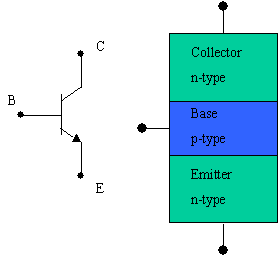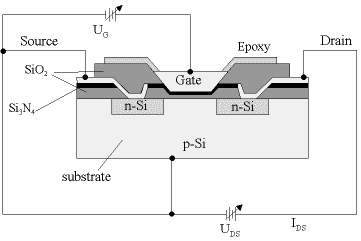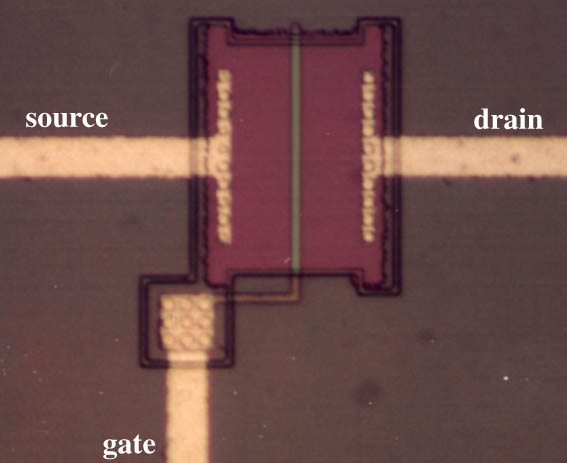Basic Transistor Physics
David Giessel
University of Alaska Fairbanks
Physics 212 Web Project, Spring 2003
David Giessel
University of Alaska Fairbanks
Physics 212 Web Project, Spring 2003
| Index | Transistor Basics | Temperature vs Frequency | Gate and Wiring size | Transistor Count | Bibliography | |
Transistor Basics
Transistors are composed of a P type (positively doped) and N type (negatively doped) semiconductor material. These P-N junctions are the heart of both BJTs (Bipolar Junction Transistors) and FETs (Field Effect Transistors). BJTs have a physical connection between they current controlling input (base) and the input and output (collector and emitter). This results in a trickle current into the base. FETs have a physical separation between the control (gate) and the input and output (drain and source). The differences in these two types of transistors are illustrated below.

NPN BJT

PNP BJT

FET

FET implementation on an integrated circuit
BJT and FET transistors are used in virtually every electronic device requiring current regulation or amplification. They make it very easy to precisely control power to a device reliably and with much greater efficiency than other methods. Another common use of transistors is their role in discrete logic. First used in DTL (Diode Transistor Logic) transistors compact nature and high switching speeds lend themselves well to use in logic ICs. In fact, almost every component of a modern computer is controlled by transistors. Video processing functions, system memory, system bus functions, and of course the main system processor. Many of these chips are composed of millions of transistors switching at very high frequency. The frequency that these logic transistors switch at is a primary factor in chip performance and is therefore of great significance. What factors limit switching speeds and how are chips being made to go faster and faster? Power consumption and gate temperature are two of the primary factors that affect switching speed.
See what is being done to lower gate power use and IC temperatures on the next page. Temperature vs Frequency.